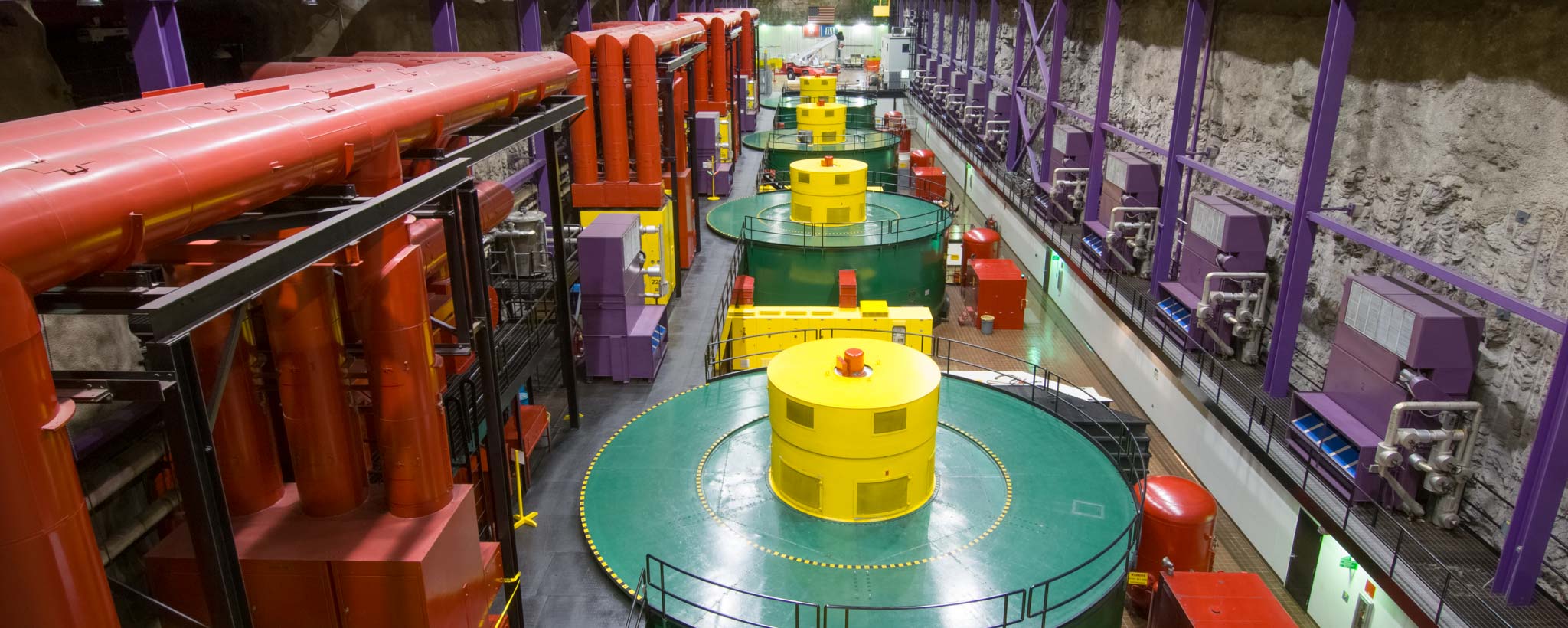Hydroelectric Power
Hydroelectric power, or hydroelectricity, is generated by the force of falling water. (Hydro comes from the Greek word for water.) It’s one of the cleanest sources of energy, and it’s also the most reliable and costs the least. That means that TVA's hydroelectric power plants are able to provide electricity at a reasonable cost to families, schools, farms, factories and businesses.
How Does Hydroelectric Power Work?
Water is needed to run a hydroelectric power-generating unit. The water is held behind a dam, forming an artificial lake, or reservoir. The force of the water being released from the reservoir through the dam spins the blades of a giant turbine. The turbine is connected to the generator that makes electricity as it spins. After passing through the turbine, the water flows back into the river on the other side of the dam.
TVA uses water to make electricity at 29 hydroelectric dams and one pumped-storage power plant (at Raccoon Mountain near Chattanooga, Tennessee). Together these plants produced about 16.1 million megawatt hours of electricity in 2019, enough electricity to power more than one million homes for a year.
How Does a Pumped-storage Plant Work?
A pumped-storage plant uses two reservoirs, one located at a much higher elevation than the other. During times when people are not using a lot of electricity, such as nights and weekends, water is pumped from the lower to the upper reservoir.
Thus, the water is stored for use during weekdays when people need more electricity. The stored water can be released to turn the turbines and generate electricity as it flows back down to the lower reservoir. Read more about TVA's Raccoon Mountain. Then read more about how TVA built this mountaintop marvel.

